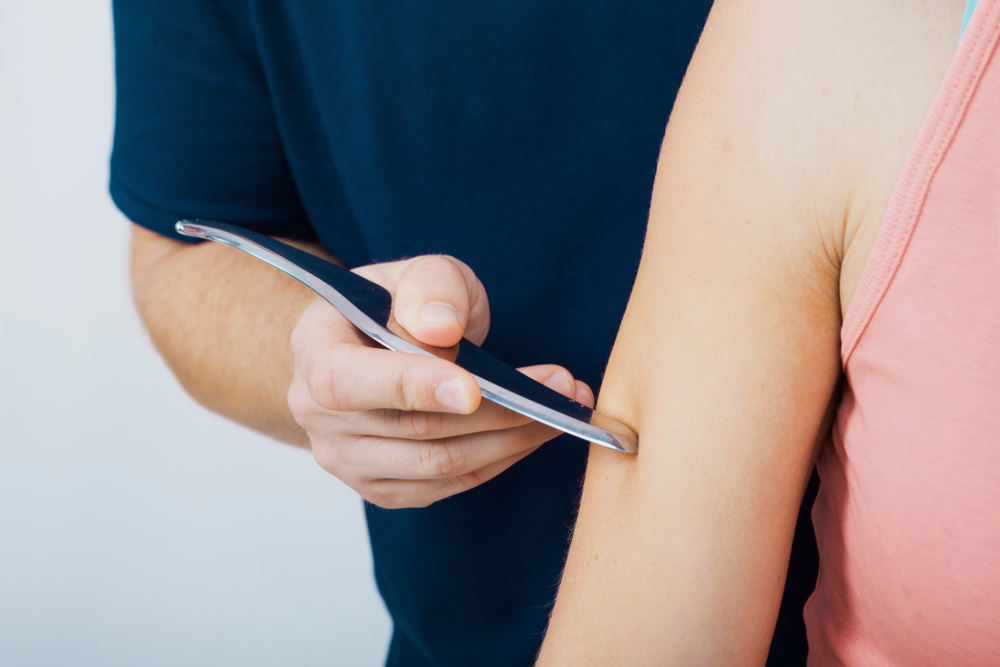Updated: December 2, 2024
What Is Tennis Elbow?
Tennis elbow is one of the most well-known and common ailments of the elbow that we treat here in Whitefish Chiropractic. Clinically known as lateral epicondylitis, the layman's diagnosis is Tennis elbow. This pain is usually going to present on the outside of the elbow and it's typically going to be more from a chronic and repetitive mechanism of injury. What this means is that the injury doesn't usually occur from a traumatic event like a fall, rather it's something that's going to build slowly over time with repetitive motions.
What Causes Tennis Elbow?
Tennis elbow is more of tendinopathy than tendonitis. Most of the research shows that chronic conditions in the lateral elbow are less a problem of inflammation and more a problem of the body not healing it efficiently.
After taking a detailed history of the patient's condition, the next order of business when evaluating an elbow in our office is to perform a detailed oriented, hands-on exam to confirm our hypothesis that the patient's pain is derived from lateral epicondylitis.
Two major things that we look for when it comes to making a diagnosis of Tennis Elbow are:
- The patient has pain with a straight elbow and resisted wrist extension.
- The patient has pain with a straight elbow and resisted extension of the middle finger.
*We want to be sure that this elbow pain is not being referred to from other areas of the body such as the neck, or surrounding nerves.
Treatment for Tennis Elbow and Sports Injuries
As far as treatment is concerned, our goal is going to be to accomplish several different things. The first is the treatment of the muscle itself.
Treating the Muscles
Our main approach when treating conditions like this is utilizing a well-known soft-tissue treatment called Active Release Technique (ART). This is a soft tissue technique that can be considered a functional massage where a doctor is applying pressure to a specific muscle while the patient moves through a specific motion in the desired area. This will help break tension within the muscle and take pressure off the tendon.
Another common thing that we see in this area is an abundance of scar tissue. When the body is placed under continued chronic stress it tends to lay down scar tissue. The trouble with this is, that oftentimes scar tissue will inadvertently "tether" two muscles to one another. Active Release Techniques is a great tool that we use to help get the separation of those two tissues.
Another manual therapy technique that we often use is the Graston Technique. This technique, commonly known as "muscle scraping", uses a metal instrument with a beveled edge that is scraped across that tissue. This will subject the body to create more blood flow in the area and increase the full range of motion of that area.
The last technique is dry needling, which is a great tool to use to contact areas that are too tough to contact with fingertips. The needle can get into the tendon itself and increase targeted inflammation and help break down tension in the muscle.
One benefit of the dry-needling approach to the other two techniques is the point of contact with the muscle. With both Graston Technique and ART, we are trying to affect the involved tissue from the surface of the body. With dry needling, we are actually within the tissue itself. So you can get a bit more of a profound change more quickly that can be effective in controlling that discomfort.
Rehabbing & Home-Care for Tennis Elbow
There are going to be other things we can send you home with as far as exercises, and icing to help combat the inflammation that we're creating through our treatment.
One easy exercise that a patient can utilize is something called "towel ringing". If you've got a hand towel on the house, you can simply roll the towel up like you are attempting to drain water from a wet towel.
Start with your wrist extended with a little bit of pressure on the towel and then increase the tension as you ring it out. And that really, that end range of motion there should feel a good stretch across the top of the elbow. It should "hurt so good" as we like to say. That technique right there is what we call an eccentric contraction of the muscles.
The "towel ringing" exercise is a good example of an eccentric exercise. This is a great way to strengthen these muscles because we are strengthening the muscle as it lengthens, and that's usually a very effective way to treat, chronic injuries such as lateral epicondylitis.
If you think you may be suffering from tennis elbow, contact Whitefish Chiropractic today! We will be more than happy to help at one of our three convenient locations across the valley. We look forward to hearing from you!



